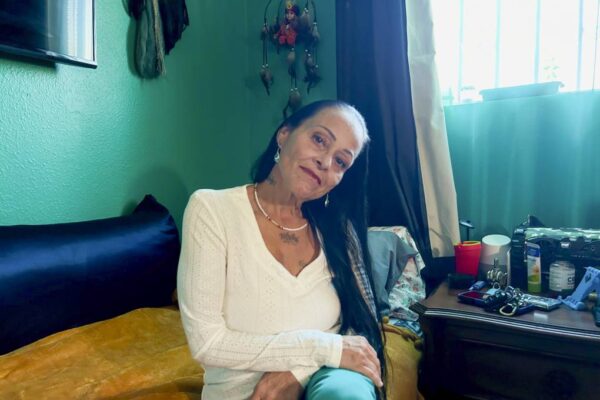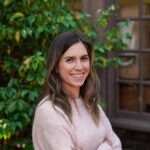Forced Sterilization Survivors Undertake Own Healing After Feeling ‘Silenced Again’ by State
by Cayla Mihalovich. This story was originally published by KQED on October 11, and you can listen to the audio story on the KQED website.

Moonlight Pulido at her home in Carson on Feb. 10, 2024. While incarcerated in 2005, a doctor performed a hysterectomy on Pulido without her consent. A law required California to involve survivors in memorializing the state’s history of forced sterilization. Survivors say that didn’t happen — so they undertook their own project of healing. (Cayla Mihalovich for KQED)
This story was originally published in April 2024. The audio was first broadcast Oct. 11, 2024. Since the story first published, the compensation board has now approved a total of 118 applicants. It has denied 432 – or roughly 75% – of applicants. State agencies have now spent roughly $180,000 on memorials to survivors of state-sponsored sterilization. Dr. James Heinrich passed away in January 2024.Gov. Gavin Newsom signed a bill on Sept. 30 that gives more time to survivors of state-sponsored sterilization to appeal their case if they were denied reparations. They have until Jan. 1, 2025 to file an appeal.
Listen to this and more in-depth storytelling by subscribing to The California Report Magazine podcast.
Moonlight Pulido is a mother and a caretaker for her own mom in Los Angeles. But she couldn’t have more children after a prison doctor performed an involuntary hysterectomy while she was incarcerated in 2005. She’s one of hundreds of living survivors of state-sponsored sterilization.
Here in California, more than 20,000 people were involuntarily sterilized in state prisons, homes and hospitals under eugenics laws. People classified as “unfit to reproduce” were disproportionately poor women, people of color, and people with disabilities. Even though California’s eugenics laws were repealed in 1979, people who were incarcerated were still forcibly sterilized as recently as 2013.
In 2021, the state passed a historic reparations law to make amends for this shameful chapter in our history. For more than a year, reporter Cayla Mihalovich has been investigating how the law has been implemented. It was intended to compensate survivors for their suffering. But roughly 75% of applicants have been denied reparations.
Cayla Mihalovich is a reporter with the Investigative Reporting Program at the UC Berkeley Graduate School of Journalism.


